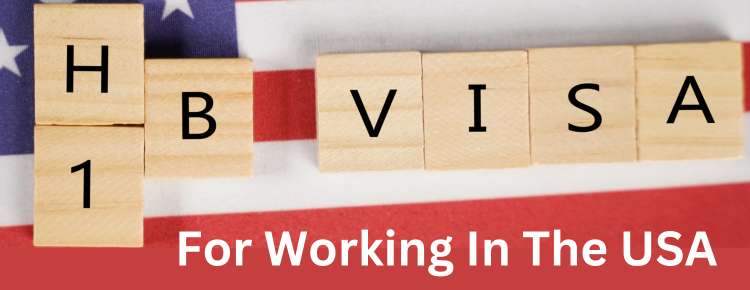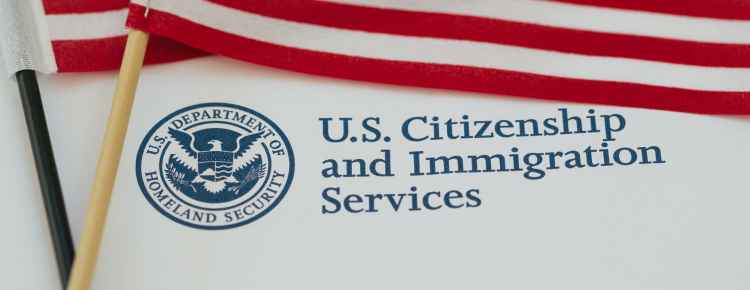If you are a U.S. citizen and want to legally marry your foreign partner and bring your foreign partner to the U.S. then you can apply for a K-1 visa. The K-1 visa which is also known as the fiancé(e) visa, allows a foreign fiancé(e) of a U.S. citizen to travel to the U.S. with the intention of getting married.
After marriage, the foreign spouse can apply for a green card (lawful permanent resident status) without leaving the United States. Here is an overview of the process.
What Is the K1 Visa And How Does It Work?
The K-1 visa, also known as fiancé(e) visa, is a nonimmigration visa for the foreign-citizen fiancé(e) of a united states (U.S.) citizen.
- The k-1 visa allows the foreign-citizen fiancé(e) to travel to the United States to marry their U.S. citizen sponsor
- Marriage to take place within 90 days of arrival.
- After marriage, the foreign citizen fiancé(e) can apply for adjustment of status to a lawful permanent resident (LPR)
- The application must be done with the Department of Homeland Security (DHS), U.S. Citizenship and immigration services (USCIS)
- U.S. citizens already married or wanting to get married outside the United States are not eligible for a K1 visa. But can apply for a K-3 visa (spouse visa).
- Eligible children of K-1 visa applicants receive K-2 visas
- All K visa applicants need to undergo a medical examination before traveling to the United States. (The cost is based on the country in which the K visa interview is conducted).
- As a fiancé(e) visa allows the holder to immigrate to the U.S. and marry a U.S. citizen the fiancé(e) must meet some of the requirements of an immigrant visa.
- If you are already married, planning to marry outside the U.S., or your foreign citizen fiancé(e) is already legally living in the U.S., then you and your spouse/fiancée are not eligible for a K-1 visa. You may apply for the K3 spousal visa
- A K3 visa is a temporary nonimmigrant visa allowing the visa holder to stay in the U.S. for up to 2 (two) years in total.
NOTE: It is important to note, If the consular officer grants the K-1 visa nonimmigrant visa, it is important not to open the sealed packet provided, as only DHS officials should open it when the visa holder enters the United States.

What Is A Fiancé(e) As Per U.S. Immigration Law?
Under U.S. immigration law:
- A fiancé(e) refers to a foreign citizen who is engaged to a United States (U.S.) citizen
- Intends to marry their U.S. citizen sponsor within 90 days of entering the U.S., on a K-1 nonimmigrant visa.
- The foreign fiancé(e) of the U.S. citizen must be a recipient of an approved Petition for Alien fiancé, Form I 129F, and
- Must have been issued a nonimmigrant visa.
- The marriage must be legally possible according to the laws of the U.S. state where the marriage is to take place

K-1 Visa Eligibility
The foreign-citizen fiancé(e) of a U.S. citizen must meet certain requirements to be eligible for a K-1 visa, These requirements include:
- The foreign citizen fiancé(e) must live outside the United States and be legally free and able to marry
- Must give Proof that any previous marriages had been legally terminated (by death, divorce, annulment)
- Same-sex partners are eligible for K-1 visa
- The foreign partner and U.S. sponsor must have met in person the U.S. citizen partner,(Within the last two years prior to the date of filing the K-1 visa petition)
- You can request a waiver of this in-person meeting requirement:
- If it violates either of your religious or cultural practices or
- If it would cause extreme hardship to the U.S. citizen petitioner
- The foreign partner must not have been convicted of serious crimes
- The foreign partner’s children (unmarried), must be under the age of 21 in order to be sponsored for a K-2 visa
In addition to these requirements, the U.S. citizen sponsor must file a petition for the K-1 visa on their foreign citizen fiancé(e) by submitting Form I-129F, Petition for Alien fiancé(e), to USCIS.
The U.S. citizen sponsor must also provide evidence that they are able to provide financial support to their fiancé(e) during their stay in the United States.
Once the K-1 visa is approved,
- The foreign fiancé(e) is given six months from the date of approval to enter the United States and
- Get married to their U.S. citizen sponsor within 90 days of arrival.
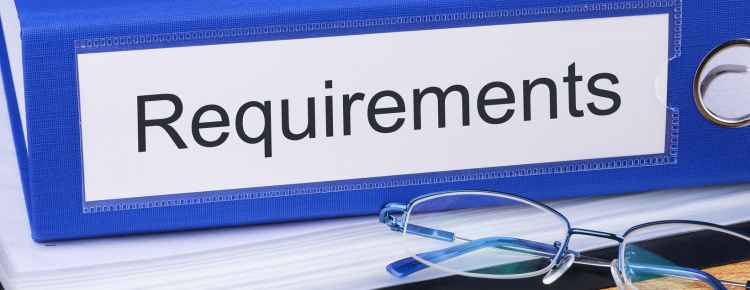
What Are The Requirements For A K1 Visa?
The requirements for a K-1 visa, also known as a fiancé(e) visa, involve eligibility of the foreign partner, sponsorship and intention, financial requirements, and considerations for any children of the foreign partner. These requirements are essential for the successful application and approval of the K-1 visa.
Here are the key points in detail:
Eligibility of the Foreign Partner:
The foreign partner must live outside the U.S., be legally free and able to marry, and have met the U.S, citizen sponsor within the last two years prior to the filing of Form I-129F
The foreign partner must not have committed crimes that would prohibit entry to the U.S. and be able to present records and documents requested by the U.S. Embassy or Consulate, such as
- Passport,
- Birth certificate,
- Police certificates, and
- Military records if applicable.
Sponsorship and Intentions:
The sponsoring fiancé must be a U.S. citizen,
Note: U.S. lawful permanent residents (green card holders) are not permitted to sponsor their fiancé for a K-1 visa.
Both partners must intend to marry each other within 90 days of the foreign fiancé(e) entering the U.S. as a K-1 nonimmigrant, and the marriage must be valid, with a bona fide intent to establish a life together.
Financial Requirements:
The U.S. citizen sponsor must meet the income requirements for a K-1 visa, with the adjusted gross income on their most recent tax return equaling at least 100% of the Federal Poverty Guidelines.
A joint sponsor may be used if the sponsor is unable to meet the income requirements on their own
K-2 Visas May be Issued to Children of the Foreign Partner:
If the foreign partner has children, they must be under the age of 21 to be sponsored for a K-2 visa. they can generally immigrate as well. K-2 children may enter the U.S. at the same time or shortly after the K-1 fiancé(e).
Visa Validity and Process:
The K-1 visa permits the foreign citizen fiancé(e):
- To travel to the United States and marry his or her U.S. citizen
- The foreign citizen fiancé(e) must marry his or her U.S. citizen sponsor within 90 days of arrival.
- The visa is valid for Up to 6 months for a single entry.
- After marriage, the foreign fiancé(e) may apply for an adjustment of status to obtain a Permanent Resident (Green) Card.
What Are The Income Requirements For A K-1 Fiancé Visa?
The U.S. citizen must earn 100% of the federal poverty level
There are no specific income requirements for the foreign fiancé(e)
The International Marriage Broker Regulation Act of 2005 (IMBRA)
The International Marriage Broker Regulation Act of 2005 (IMBRA) is a United States law that aims to protect foreign-citizen fiancé e and spouses of U.S citizens and lawful permanent residents from abuse and exploitation
The act requires U.S. citizens petitioning to sponsor K visas to disclose convictions for a list of violent crimes on the I-129F petition Form that they file with USCIS.
This act was put in place to protect fiancée and marriage-based green card applicants, particularly women and children from abuse at the hands of the sponsoring spouse.
The act seeks to protect those coming to the U.S. on marriage visas from abuse.
IMBRA requires that the U.S. government provides to an immigrating fiancé(e) or spouse of a citizen or resident of the U.S., an information pamphlet providing information about domestic violence, legal rights, and resources available to immigrant victims of domestic violence in the United States.
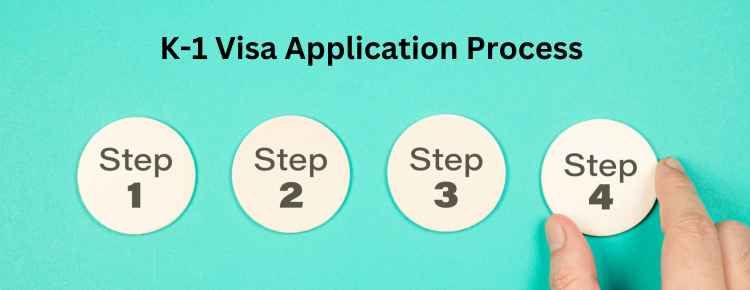
K-1 Visa Application Process:
Even though the K-1 visa is officially classified as a nonimmigrant visa it is most often used as a method to obtain full immigration benefits with most K-1 visa holders coming to the U.S. with the intention of living (with their U.S. citizen spouse) and working in the U.S. by receiving a green card
The First Step: Filing the Petition
Petition Filing:
The U.S. citizen sponsor files Form I 129F, Petition for Alien fiancé e, with the U.S. Citizenship and immigration services (USCIS).
- This form establishes the qualifying relationship and the intention to marry within 90 days of the foreign fiancé (e) entering the U.S.
- Form I 129F proves your relationship is legitimate
- Form I 129F must be filed by a U.S. Citizen
- As a green holder is not allowed to request a k-1 visa for their fiancé
- A lawful permanent resident (a green card holder) cannot request a K-1 visa for their fiancé
What Documents Does USCIS Need For K-1 Fiancé Visa Processing?
Along with the petition, the U.S. citizen sponsor must submit supporting documents to demonstrate that the relationship with the foreign-citizen fiancé(e) is genuine and that they meet the eligibility requirements.
Following are some of the supporting documents for the K-1 visa application process:
Documents Needed for K-1 visa processing
For filing Form I-129F with USCIS, The following documents must be included with the form:
- To prove that your fiancé is a U.S. citizen
- A copy of your U.S. fiancé U.S.
- passport,
- Certificate of naturalization, or
- birth certificate
- A copy of your U.S. fiancé U.S.
- Copy of your foreign passport
- To prove your relationship is legitimate or bona fide include
- Pictures of you and your fiancé (together in the picture)
- Flight record, Hotel reservations of trips you both took together or visited each other
- Letters, emails, or texts that you send to each other over the years
- A written statement from family and friends, or colleagues to prove that you both are engaged
- Proof that the two of you have met in person at least once within the past two years, Include flight itineraries, Photos, hotel receipts, letters, texts, emails
- Sworn Statement describing your relationship (written and signed by each partner) stating you both intend to get married within 90 days of your arrival in the U.S. (Provide originals keep copies for your record)
- Copy of Form I-94 arrival departure record (if you have visited the U.S.)
- One passport-style photograph (of each partner)
- If any of you were formally married, Then proof that your former marriage has ended.
- Include Divorce decrees, death certificates, annulments
- Form I-129F filing fees are paid via money order or credit card (USCIS does not accept cash)
USCIS sends you a receipt notice within 30 days After receiving your mailed Form I-129 and the supporting documents. USCIS begins processing your case within 30 days.
Form I-129F Processing Time
The USCIS takes anywhere between 4-15 months to process Form I-129F. If USCIS needs more information the agency will send an RFE (request for evidence) so While on the wait look out for any RFE (request for evidence) from USCIS
Once your Form I-129F petition is approved by USCIS it sends an approval notice to the mailing address provided to the USCIS.
Approval of Petition:
If the petition is approved, USCIS sends the approved petition to the National Visa Centre (NVA). The NVA gives you a case number and sends the petition to the U.S. embassy or consulate in the foreign fiancé(e)’s home country where the foreign national fiancé(e) lives.
The Second Step: Applying for K-1 Visa
K-1 Visa Application:
The foreign fiancé e applies for a K-1 visa at the U.S. embassy or consulate. This process involves submitting additional documentation, attending an interview, and undergoing a medical examination
Note: Provide the correct contact information on your Form I-129F to receive the notice
This notice provides the date and location of your visa interview and the list of additional supporting documents required
Once the notice from NVC is received complete the State Departments online nonimmigrant visa application DS-160
File Form DS-160
Complete the online DS-160 nonimmigration visa application. Print the confirmation page and keep it in a safe place as it will be needed in your visa interview.
Form DS-160 Processing Time
NVC requires 2-3 months to create and process your DS-160 form
(After the DS-160 form is filed in the Consular Electronic Application Centre (CEAC))
Documents Required
The Documents of U.S. citizen fiancé
- An affidavit of support (I-134)
- Recent Tax Returns (you may be required to provide the most recent return and/or the past three years’ return)
- Proof of relationship with your foreign fiancé (provide a copy of approved I-129F filed with USCIS)
Documents of the foreign fiancé
- Two passport-styled photographs
- Birth Certificate
- Copy of valid unexpired passport
- Police clearance from all countries ( you lived for more than six months since you were 16 years)
- Sealed medical exam form from an approved doctor (at an immigration medical exam)
Attend Your Visa Interview and Pay the Visa Fee
The visa interview takes place at the U.S. embassy or consulate in the foreign fiancés home country
- The notice received from NVC contains the place where a visa interview is to take place
- Only foreign fiancé attend the visa interview
- Pay a fee of $265 for the K-1 fiancé visa as per instructions in the notice received from the embassy or consulate handling the case
- If additional information or evidence is required the consular officer conducting your interview will ask you to submit it (after the interview) at the U.S. embassy or consulate
Required Documentation:
The following documents must be brought by the foreign citizen fiancé e, (and eligible children applying for a K-2 visa) to the visa interview
- Completed Form DS-160, (Online nonimmigrant visa application)
- Printed DS-160 confirmation page
- A passport valid for travel
- Birth certificate
- Divorce or Death certificate
- Police certificates
- Medical examination
- Evidence of financial support
- Two 2×2 photographs
- Evidence of relationship
- Payment of fees
Arrival in the U.S. and Getting Married
After the K-1 visa is approved, you get a sealed visa packet.
- It is most important that you do not open this sealed packet
- This packet will be opened by the U.S. Customs and Border Protection agent inspecting you at the border.
- If the packet is opened you may not be allowed to enter the U.S.
- Once the K-1 visa is granted, the foreign citizen fiancé(e) can travel to the U.S.
- There is a time limit once the K-1 visa is approved within which you need to enter the U.S.
- You must travel to the U.S. before the visa expires
- The couple must marry within 90 days of the foreign fiancé (e)’s entry into the U.S.
- If marriage doesn’t take place within the stipulated 90 days after entering the U.S. the K-1 visa status is lost.
- You can’t marry anyone other than the U.S. citizen filed on your Form I-129F
The status from K-1 visa to any other status can’t be changed, other than a marriage green card
Adjustment of Status (Green Card Application)
After marriage, the foreign spouse must file Form I-485, Application to Register Permanent Residence or Adjust Status, with USCIS to apply for a green card. This process includes submitting supporting documents, undergoing a medical examination, and attending a biometrics appointment
Biometrics and Interview:
The Foreign Spouse will be required to attend a biometrics appointment and an interview as part of the adjustment of status process
Conditional Green Card:
If the marriage is less than two years old at the time of the green card approval, the foreign spouse will receive a conditional green card, valid for two years
Removal of Conditions:
Ninety days before the conditional green card expires, the couple must file Form I-751, Petition to Remove Conditions on Residency, to have the conditions removed and obtain a 10-year green card. This involves submitting additional evidence of the bona fide nature of the marriage
Permanent Green Card:
If the petition to remove conditions is approved, the foreign Spouse will receive a permanent (10-year) green card
Naturalization:
After holding a green card for a certain period (usually three years if married to a U.S. citizen), the foreign spouse can apply for U.S citizenship through the naturalization process

Medical Examination And Vaccination Requirements
For a K-1 visa medical examination and vaccination requirements are essential steps in the visa application process. Here is a summary of the key points:
- All K visa applicants are required to undergo a medical examination (performed by an authorized panel physician).
- The U.S. Embassy or Consulate where the visa application is made will provide instructions regarding the medical examinations and information on authorized panel physician
- The K visa applicants are encouraged to get the vaccinations as required under U.S. immigration law for immigrant visas.
- While there are no vaccination requirements for the K visa issuance, K visa applicants are encouraged to fulfill these vaccination requirements at the time of the medical examination.
- Vaccination will be required when adjusting status to that of a legal permanent resident status following marriage
Do The Same Income Requirements Apply to Form I-134 As Apply To Form I-864?
No, the same income requirements do not apply to Form I-134 as apply to Form I-864
Applicants presenting form I-134 need to show that:
- Their U.S. sponsor’s income is 100 percent of the federal poverty guidelines
Applicants using Form I-864 typically will need to show that their sponsor’s income is 125 percent of the federal poverty guidelines
- The 125 percent of the federal poverty guideline minimum income requirement
- The most recent year’s tax return
- Other requirements
- All this only applies when form I-864 is needed
Form I-134
Form I-134 is used when a U.S. citizen or green card holder agrees to become a financial sponsor of a travel visa or a K-1 and K-1 visa. Instead of the applicant having to prove they have enough money for their stay in the U.S. the sponsor steps in and says that they will be the applicant’s financial support.
The sponsor then fills out Form I-134, provides proof of their ability to financially support the applicant, and signs the documents.
Form I-864
Form I-864 on the other hand is required to be filed by the petitioner/sponsor for almost all family-based immigrants, and in some instances, for employment-based immigrants, to show the intending immigrant will be financially supported and is unlikely to become a public charge once he or she has immigrated to the US
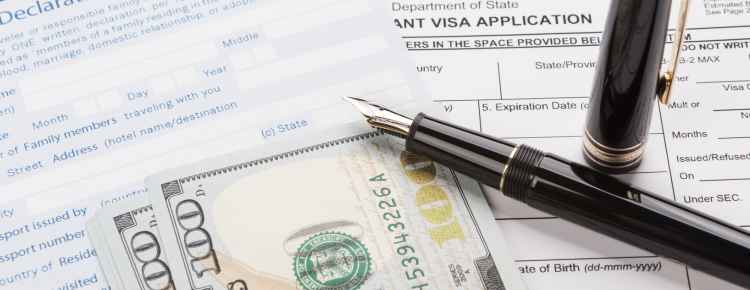
K-1 Visa Cost
The cost of a K-1 visa can vary based on different factors, including government filing fees, medical exams, translation services, and legal assistance. Here’s a summary of the cost information:
- Government Filing Fees: The government filing fees for obtaining a K-1 visa are approximately $800
- Additional Fees: In addition to the government filing fees, there may be additional costs for medical exams, translation services, and document fees. These additional expenses can vary and may include translation of documents, document fees, and travel expenses for medical exams and interviews
- Visa Application Fees: After the K-1 petition has been approved, the applicant will need to file for the K-1 visa application using form DS-160. The K-1 visa fee for filing the DS-160 form is $265. Each person accompanying the foreign fiancé(e) will be required to pay these fees
- Legal Assistance: The cost of legal assistance, if sought, can also contribute to the overall cost of the K-1 visa process
- The total cost of the K-1 visa can range from $1000 to $5000, including government fees, medical exams, and legal assistance.
How Much Does It Cost To Get A Green Card Through A Fiancé Visa?
Costs associated with K-1 Fiancé(e) visa in addition to the initial I-129F petition. These are approximate rates for exact rates please refer to the concerned departments.
| ITEM (USCIS, NVC, U.S. Consulate ) | GOVERNMENT FEES | CITIZENSHIP FEES |
|---|---|---|
| FORM I-129 (Petition for Alien Fiancé) | $535 | $139 |
| DS-160 Visa Application | $265 | N/A |
| FORM I-134 (Declaration of Financial Support) | N/A | $99 |
| MEDICAL EXAM | N/A | N/A |
| PACKAGE For ADJUSTMENT OF STATUS | ||
| I-131 (Application for Travel Document) | ||
| I-485 (Application to Adjust Status) | ||
| I-693 (Report of Medical Examination) | $1225 | $422 |
| I-765 (Application for Employment Authorization | ||
| I-864 (Affidavit of Support) | ||
| TOTAL (For Adult Applicant) | $2025 | $660* |
| *Includes some non-essential Forms, Can be removed |
My Petition Expired – Can It Be Extended?
- Yes, the validity of the petition can be extended by a consular officer if it expires before visa processing is completed
- Note: The I-129F petition is valid only for four months from the date of approval by USCIS.
Ineligibility And Waivers For Visas
Based on Certain conditions and activities an applicant may be ineligible for a visa, some of these include:
- Overstaying a previous visa
- Drug Trafficking
- Submitting Fraudulent Documents
You will be informed by a consular officer if you are ineligible. The consular officer will also advise you whether there is a waiver of the ineligibility and will also explain the waiver process.
Adjustment Of Status, Working In The United States, And Traveling Outside Of The United States
Adjustment of Status (AOS) allows certain foreign nationals already in the United States to apply for immigrant status to become a lawful permanent resident (LPR) or Green card holder. here are some key points:
- Eligibility: To file an adjustment of status application, the intending immigrant must meet certain fundamental requirements, including being physically present inside the United States and having made a lawful entry into the United States
- Employment Authorization: Adjustment of Status applicants are eligible for a work permit. known as Employment Authorization Document (EAD), which allows them to work in the United States while their green card application is pending
- Travel Authorization: Adjustment of Status applicants can also apply for travel authorization with advance parole, which allows them to travel outside the U.S. while their adjustment of status application is pending. However, it is not advisable to travel outside the U.S. while the green card application is being processed, as it may result in the denial of the adjustment of status application
- Green Card Benefits: Once the adjustment of status application is approved, the applicant becomes a lawful permanent resident and gains the right to accept employment in the United States. They can also USA a green card to reenter the United States after trips abroad of less than one year
- Consular Processing: If the applicant is outside of the United States, they may obtain their immigrant visa abroad through consular processing
It’s important to note that the adjustment of status process can be complex, and it is advisable to seek guidance from experienced immigration lawyers to understand the eligibility requirements and application process.
Time Line For Fiancé Visa
Typically, The entire K-1 visa timeline from I-129 petition to visa may take anywhere from 9 to 12 months for an applicant. The process can be expedited if the requirements and a well-prepared petition is submitted. Avoid small mistakes and oversights as this can result in time-consuming requests for evidence.
K-1 Fiancé Visa FAQs
Do You Have To Be Engaged To Apply For A K-1 Fiancé Visa?
No, but you must be able to prove that your relationship is legitimate. It is much harder to prove it if you are not engaged before you apply.
Can I Work With My K-1 Fiancé Visa?
It is important to note that a K-1 visa is not eligible for employment without DHS authorization.
- As a K-1 visa holder, you can work in the U.S. only if, after entering, you apply for and receive a work permit, known as an Employment Authorization Document (EAD), from the U.S. Citizenship and Immigration Services (USCIS) by filing Form I-765 (Application for Employment Authorization)
- The employment authorization validity is only for 90 days, and starts from the day you arrive in the United States.
- You can include Form I-765 with your application after arriving,
- If you are applying for permanent residency, and are filing Form I-485 (Application to Register Permanent Residence or Adjust Status). This grants you work authorization for one year.
How Long Does It Take To Get A K-1 Fiancé Visa?
The processing time for a K-1 fiancé visa can vary depending on various factors, such as the workload of the agencies involved in the process and the completeness of the application. The processing time could range from 6 months to 18 months.
The USCIS processing time for Form I-129F, Petition for Alien Fiancé, which is the first step in the K-1 application process, is currently 5 to 6 months.
After USCIS approves the petition:
- The case is forwarded to the NVC (National Visa Center)
- Then to the U.S. embassy or consulate
- The foreign fiancé(e) will apply for the K-1 visa at the U.S. Embassy or Consulate.
The embassy or consulate will schedule a visa interview for the foreign fiancé e and will notify them of the date and location of the interview.
After the interview, if the visa is approved, the foreign fiancé e will receive a K-1 visa that is valid for up to 6 months for a single entry
Processing time for a K-1 visa can vary based on the agencies adjudicating the many steps, and most important a poorly prepared I-129F petition can increase the processing time.
What Is The Denial Rate For The K-1 Fiancé Visa?
According to the Department of State refusal statistics for K-1 visas approximately 20,000 K-1 fiancé e are denied visas during their embassy interview. This accounts for 40% of all K-1 visa applications.
What Should Be Done If K-1 Visa Application Gets Denied?
If the K-1 visa application gets denied by USCIS:
- You may be able to file an appeal
- Work with an experienced immigration attorney to file this appeal
Does My U.S. Citizen Fiancé(e) Need To File Separate Petitions For My Children?
No, your U.S. Citizen Fiancé(e) Need not File Separate Petitions for your Children
- Your children may apply for K-2 visas based on the approval of Form I-129F, Petition for Alien fiancé e,
- This petition is the petition filed on your behalf by your U.S citizen spouse
- It is important to note that your U.S citizen Spouse must list the children on the petition.
- Separate visa applications must be submitted for each K-4 visa applicant, and each applicant must pay the K visa application fee.

